Flowers That Look Like Hibiscus: Explore Hardy Hibiscus Varieties
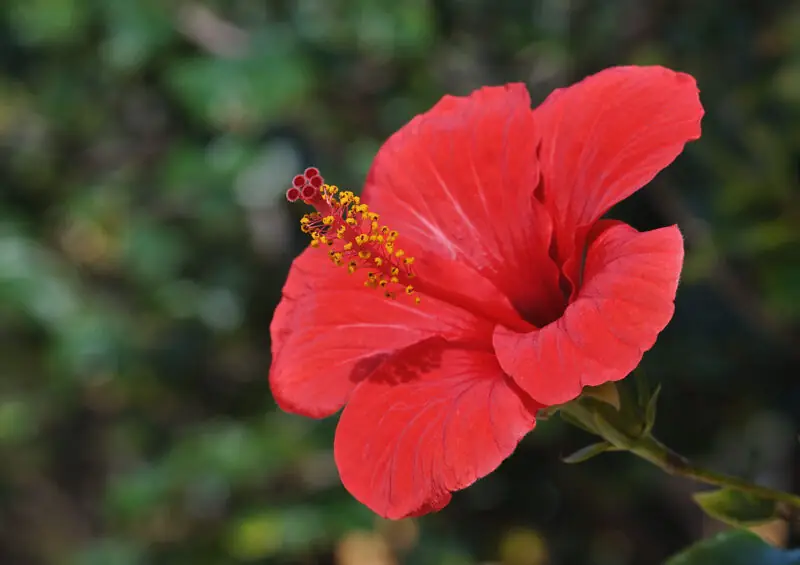
Hi there, gardening enthusiasts! Today, we’re diving into the world of flowers that look like hibiscus. You might be thinking, “Hibiscus? The extravagant, ruffled blooms that scream tropical paradise?” Absolutely! But did you know there’s a whole range of flowers that exude the same exotic charm? Get ready, plant lovers, for a floral exploration of different colors like you’ve never experienced before! We’re going to prove that plants that look like hibiscus can be just as exciting as a real hibiscus plant.
Appreciating the Musk Mallow (Malva moschata)
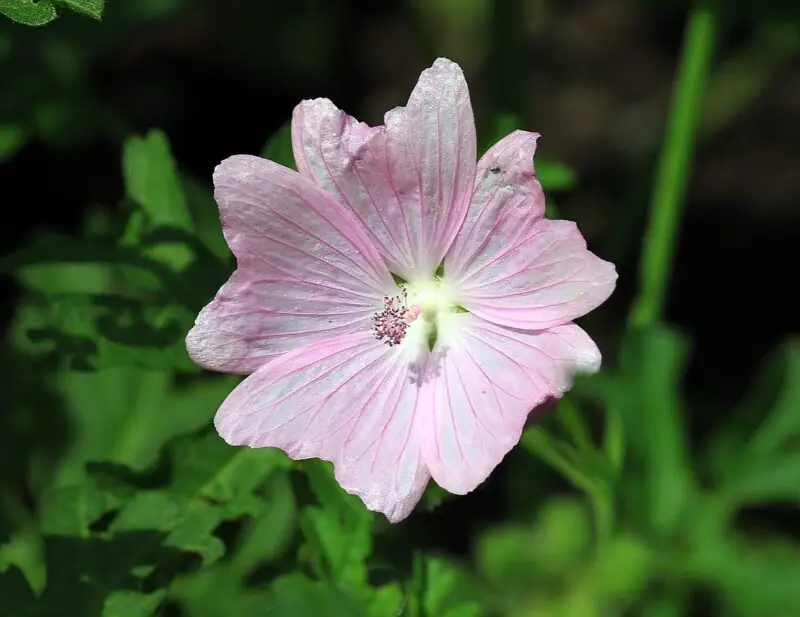
First off, let me introduce you to the Musk Mallow, a flower that might just make your garden feel like a hibiscus hideaway. This hardy perennial plant is a charmer, with its pale pink flowers that resemble a more delicate hibiscus bloom. The Musk Mallow is not just a pretty face, though. It’s got a sweet fragrance that attracts pollinators from miles around. It’s hardy and easy to care for, thriving in a variety of conditions. The flowers look like hibiscus while still carrying their own unique charm.
The Charm of Hollyhock (Alcea rosea)
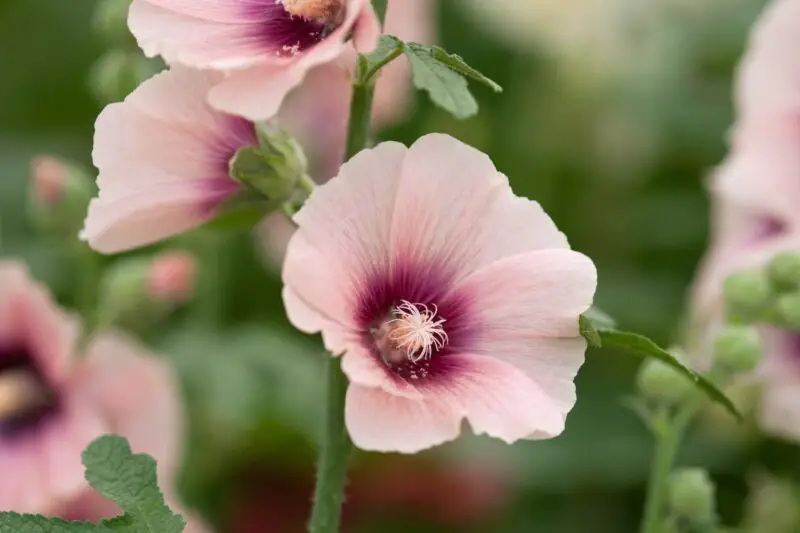
Next up, we have the Hollyhock. Now, I know what you’re thinking, “Isn’t that the plant that grannies grow?” Well, yes, but let’s not hold that against these beautiful white and pink flowers. The Hollyhock is a classic, and its flowers grow tall and proud, showing off a variety of shades like deep rose, candy pink, and even a pure white to deep rose ombre effect.
I mean, just picture these towering beauties against a garden fence, their large, brightly colored flowers nodding in the breeze. It’s like having your own personal flower parade right in your backyard! The different varieties of colors only add to the charm.
Coastal Mallow (Kosteletzkya pentacarpos): A Coastal Beauty
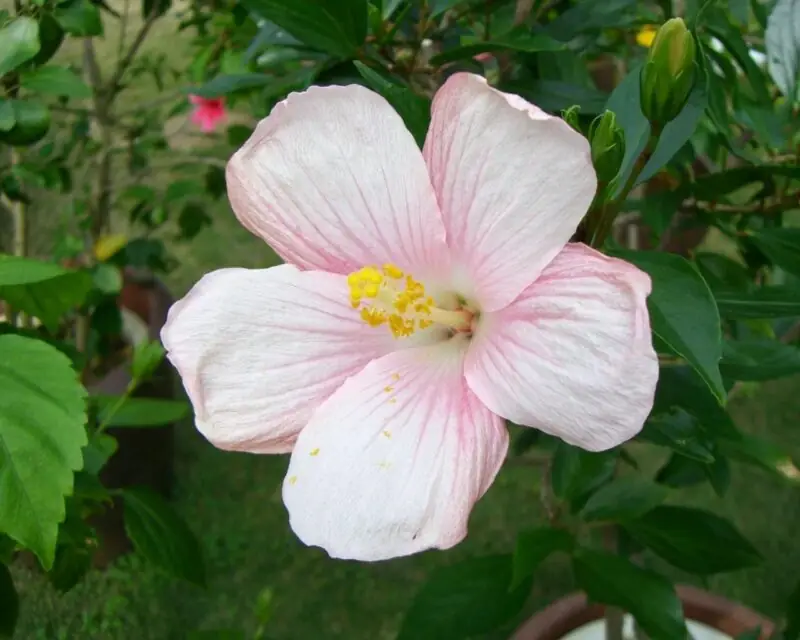
Calling all beach lovers! Our next flower, the Coastal Mallow, might be the seaside vibe you’ve been looking for. This plant can grow to about two to three feet wide and is topped with bright pink and white flowers that look eerily like hibiscus blooms. The best part? It’s a coastal plant, meaning it thrives in sandy soil and salty air.
Imagine that – a slice of the beach right in your own garden! The Coastal Mallow is also known for being hardy in colder climates, so it will continue to produce flowers even when it’s chilly.
Velvet-Tree Mallow (Malva arborea): A Soft Touch in Your Garden
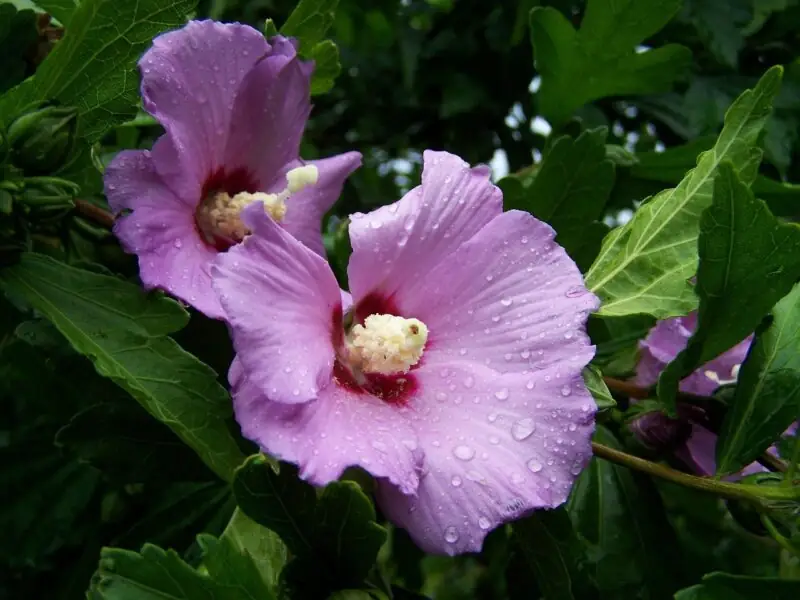
Moving on, let’s meet the Velvet-Tree Mallow, a plant that’s as soft as its name suggests. Its dark green leaves have a fuzzy texture, and its flowers are bright, cheerful, and, you guessed it, look like hibiscus blooms.
The Velvet-Tree Mallow is a hardy perennial, making it a great choice if you’re looking for something low-maintenance. And with its bright flowers and soft leaves, it’s like adding a cozy, floral blanket to your garden.
Portia Tree (Thespesia populnea): More Than a Pretty Flower
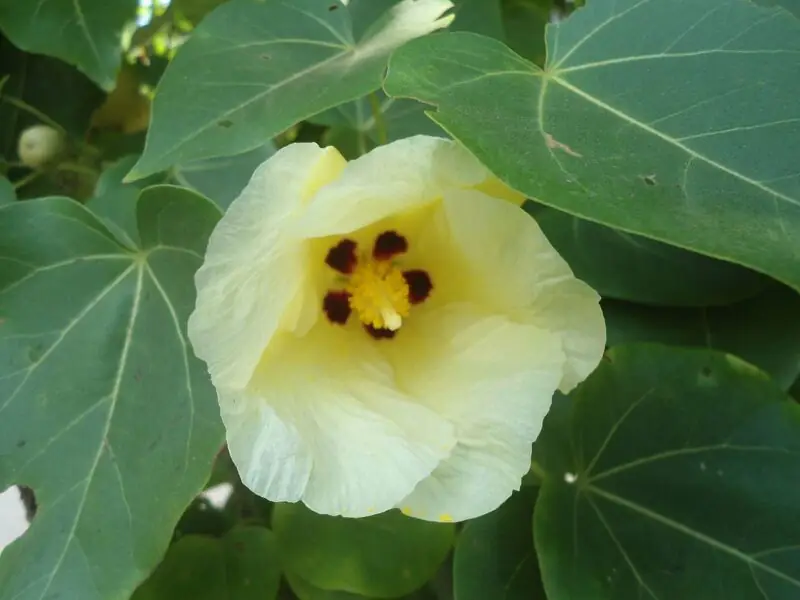
Let me introduce you to the Portia Tree, another flower that looks like hibiscus but has a personality all its own. This tropical beauty boasts large, showy flowers that come in colors like yellow, pink, and even blue. And don’t forget about the dark pink flowers with red centers – they’re like nature’s fireworks display! Larger flowers will surely have a stronger effect on aesthetics, especially indoors.
But the Portia Tree isn’t just about the looks. It’s also known for its medicinal properties. The flowers are produced on a large scale for use in traditional medicine across the globe. So, not only will this tree bring a splash of color to your garden, but it might just give you some herbal remedies to boot!
Bala or Flannel Weed (Sida cordifolia): The Comfort of Cotton
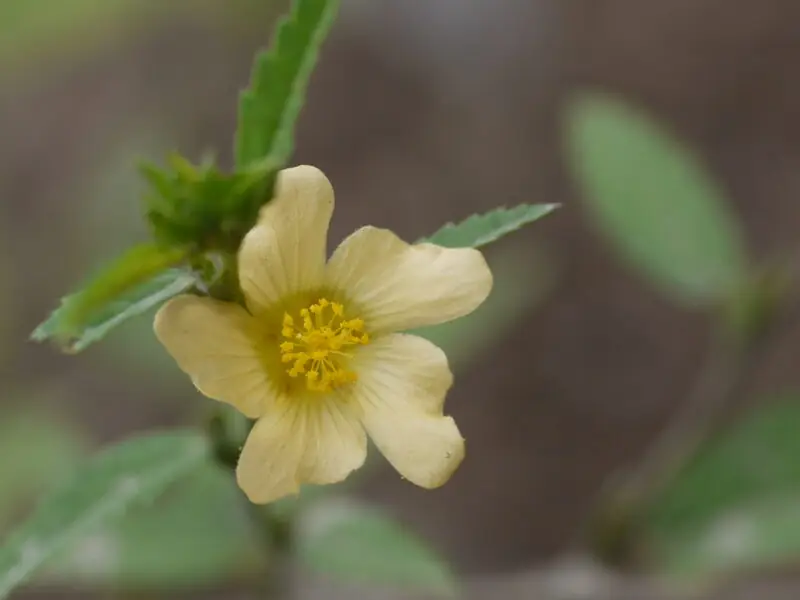
Next up is the Bala, also known as Flannel Weed, a plant that’s as soft and comforting as its name suggests. Its flowers are pale pink, and they look quite similar to hibiscus blooms. But that’s not all! The plant also has a velvety texture, making it a delightful addition to any garden.
Bala is not just beautiful; it’s also been used in traditional medicine for centuries. So, if you’re looking for a plant that’s pretty and practical, the Bala might just be the perfect addition to your garden.
The Dainty Rock Rose (Pavonia lasiopetala)
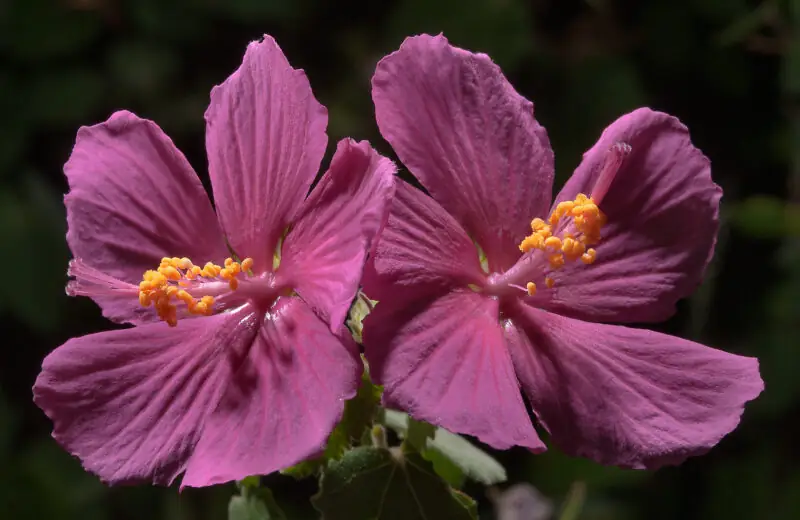
If you’re a fan of smaller flowers, the Rock Rose might be right up your alley. This plant features dainty pink petals that look like a scaled-down version of a hibiscus bloom. These flowers are perfect for adding a touch of elegance to your garden without overwhelming it with size.
The Rock Rose is also known for being drought-tolerant, making it an excellent choice for gardeners living in arid regions. So, if you’re looking for a flower that can handle the heat, this one’s for you!
Pink Mallow or Rough-Leaf African Mallow (Anisodontea scabrosa): A Splash of Color
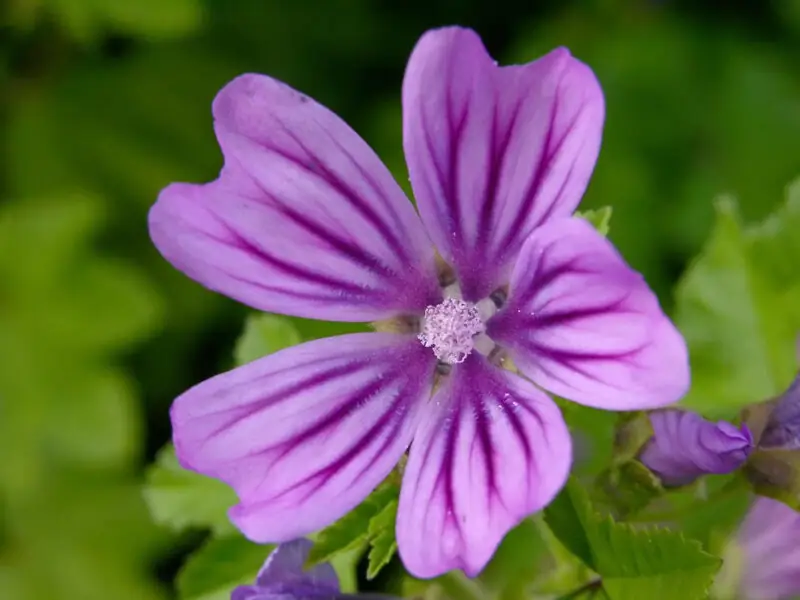
Are you looking for a flower that’ll make a bold statement? Look no further than the Pink Mallow, also known as the Rough-Leaf African Mallow. This plant is adorned with showy flowers in shades of pink, white, and even sunset hues, making it a real showstopper in the garden.
The Pink Mallow is also known for attracting pollinators, so get ready for a parade of butterflies, bees, and other helpful insects. Your garden will be buzzing with life!
Sunset Huskmallow (Abelmoschus manihot): Capturing the Essence of Dusk
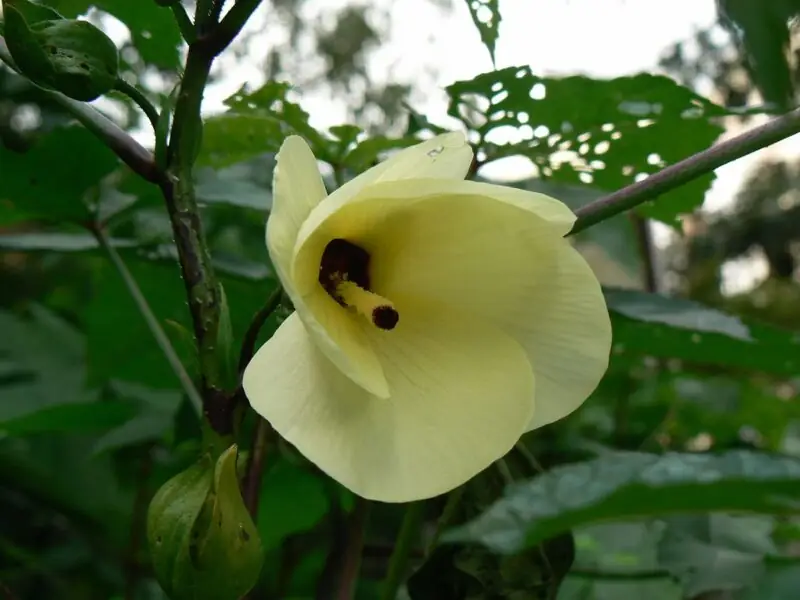
Imagine the colors of a stunning sunset, and you’ll have the Sunset Huskmallow. This flower features petals that range from cream to yellow, with some even sporting deep purple and pink hues. The Sunset Huskmallow’s blooms are a true masterpiece, reminiscent of hibiscus flowers but with their own unique flair.
These flowers are also known for being relatively low-maintenance, making them perfect for busy gardeners.
Norfolk Island Hibiscus (Lagunaria patersonii): An Exotic Resemblance
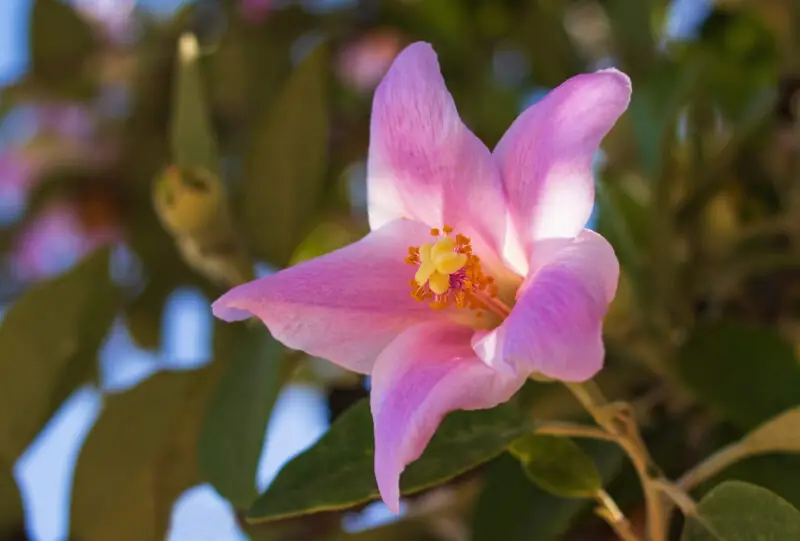
Last but not least, we have the Norfolk Island Hibiscus. While not a true hibiscus, it certainly shares a strong resemblance with large, showy flowers in pink and white. The flowers are large and impressive, making them a perfect addition to a garden that craves an exotic touch.
Not just for the looks, the Norfolk Island Hibiscus is also a hardy shrub that can withstand a range of conditions. So, if you’re a bit forgetful with your watering can or if your garden spot isn’t the sunniest, don’t worry – this plant has got you covered!
Rose of Sharon (Hibiscus syriacus)
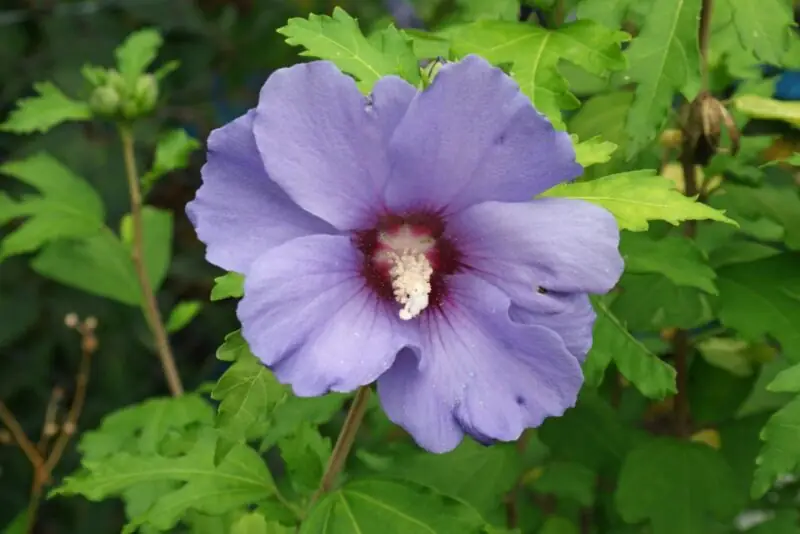
The Rose of Sharon is a hardy hibiscus variety that’s also known as Rose Mallow. This plant grows well in various conditions and is remarkably tolerant of cold climates. With dark green leaves that contrast beautifully against its white flowers, the Rose of Sharon is a sight to behold. But remember, even though it’s called a rose, it’s not a rose. It’s a hibiscus!
Not only is Rose of Sharon a stunner, but it’s also a favorite among pollinators. The red flower centers attract bees and butterflies, adding a delightful buzz and flutter to your garden. Plus, with flowers that bloom from midsummer to fall, you’ll enjoy the beauty of this plant for an extended season.
Althaea (Althaea officinalis)
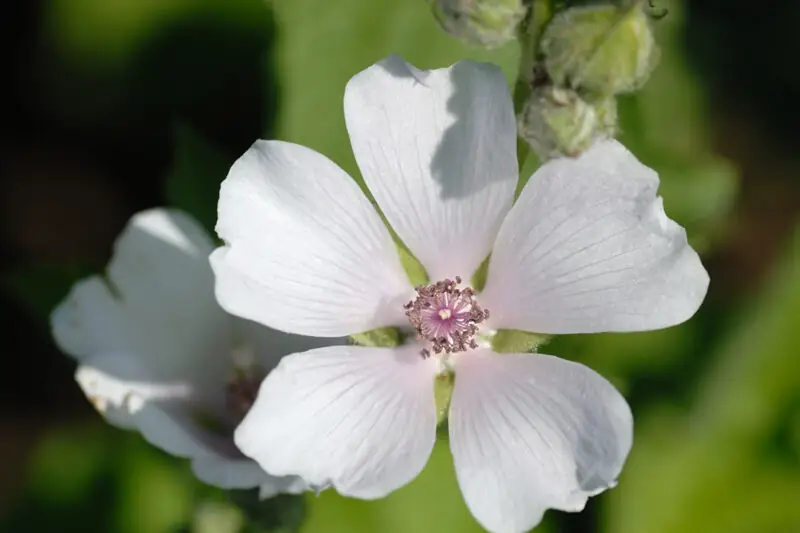
Althaea, or the marshmallow plant, is a perennial plant that’s as sweet as its name suggests. It produces pale pink flowers that resemble hibiscus blooms. These flowers come in various shades, from cream to yellow colored, and the plant can grow up to two to three feet wide.
But the Althaea is not just about looks. This plant has a rich history and was once used in traditional medicine. The roots were used to make a soothing syrup, eventually inspiring the fluffy marshmallow sweets we know and love today.
Confederate Rose (Hibiscus mutabilis)
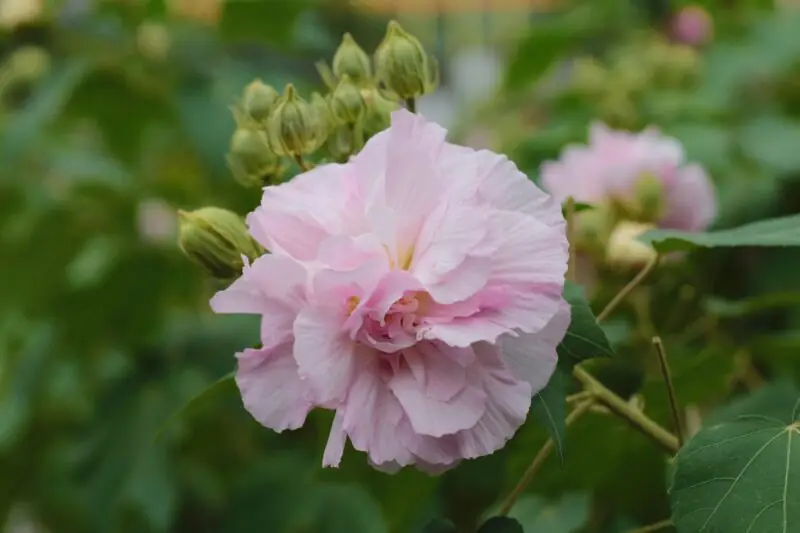
The Confederate Rose, also known as the Dixie Rose Mallow or the Texas Star Hibiscus, is a unique hibiscus lookalike. This plant is known for its large, double flowers that change color as the day progresses. The flowers open as a pure white in the morning, transition to pink by noon, and become a deep red by evening. It’s like having a color-changing flower right in your garden!
But there’s more to the Confederate Rose than meets the eye. This plant is actually a hibiscus species and is a member of the mallow family. Despite its name, it’s not a rose, but its stunning flowers might just make you think otherwise.
Swamp Rose Mallow (Hibiscus moscheutos)
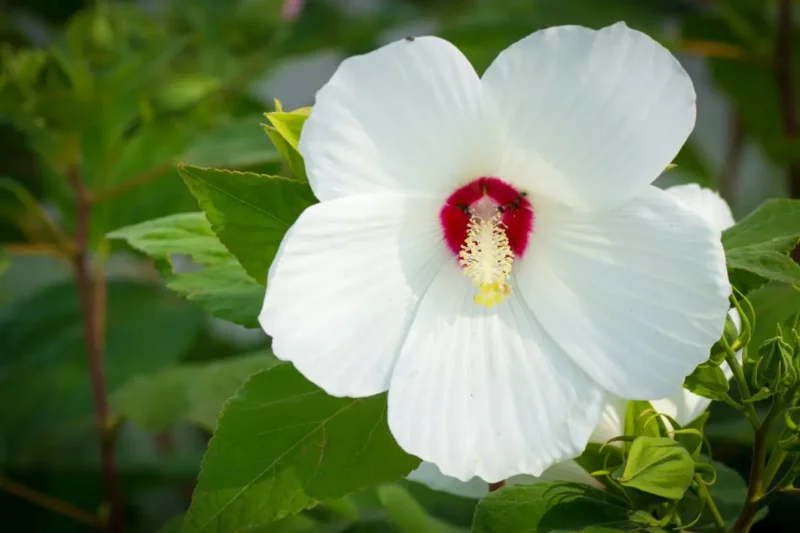
The Swamp Rose Mallow is a hardy perennial hibiscus that’s also known as the giant rose mallow. This plant grows best in wet, swampy areas and produces large, showy flowers that come in pink and red shades. The flowers are large, measuring up to 7 inches in diameter, and they make quite a statement!
What sets the Swamp Rose Mallow apart is its hardiness. This plant is tough and can tolerate wet conditions that other plants might struggle with. So, if you’ve got a wet area in your garden that needs some color, the Swamp Rose Mallow might just be the perfect fit.
Rosemallow (Hibiscus lasiocarpos)
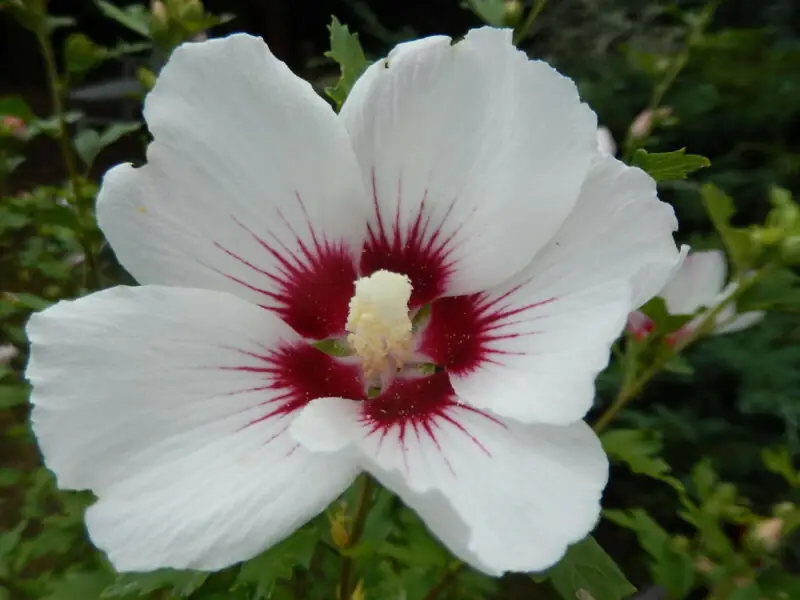
Last but not least, we have the Rosemallow. This perennial hibiscus species is a sight to behold with its large, yellow flowers and dark red centers. The contrast between the yellow petals and the red center is striking, making this plant a showstopper in any garden.
The Rosemallow is also a hardy plant that can tolerate a variety of conditions. It grows best in full sun and well-drained soil. But what makes the Rosemallow truly special is its adaptability. Whether planting it by a pond or in a garden bed, this plant will surely thrive.
Flowers That Look Like Hibiscus FAQs
Great question! All the plants we’ve discussed are actually different species that resemble hibiscus flowers. While they share some similar characteristics, like the shape and size of their blooms, each plant is a unique species with its own growth habits, care needs, and unique features.
Most likely, yes! While some of these plants, like the Portia Tree, are more suited to tropical climates, many others are hardy perennials that can thrive in a range of conditions. Always remember to check the specific needs of each plant before introducing it to your garden.
The best care practices depend on the specific plant, but in general, most of these plants will thrive in well-draining soil, with plenty of sunlight and regular watering. Some, like the Rock Rose, are more drought-tolerant, while others, like the Coastal Mallow, can tolerate salty conditions.
Absolutely! Many of these flowers, like the Musk Mallow and the Pink Mallow, are known for attracting a range of pollinators, from bees to butterflies. So, not only will your garden be beautiful, but it’ll also be a haven for these beneficial creatures.
Indeed, there are! Both the Portia Tree and the Bala are known for their medicinal properties and have been used in traditional medicine for centuries. However, always consult a healthcare professional before using any plant for medicinal purposes.
Conclusion
And there you have it, folks – a world of flowers that look like hibiscus, each with its own unique charm and personality. From the sweet-smelling Musk Mallow to the sunset hues of the Huskmallow, these flowers offer all the tropical vibes of hibiscus with their own distinctive twists. So, why not add one (or more!) to your garden this year? With their showy blooms and hardy nature, these plants will make your garden the talk of the town!